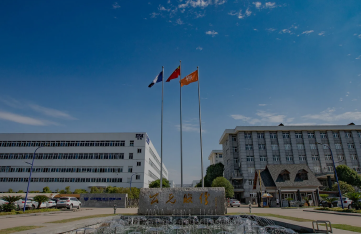Chemical processing is a critical industry where the proper handling of
aggressive chemicals is paramount. Valves play a vital role in controlling fluid
flow in these applications, and PVC ball valves are a popular choice due to
their durability and performance. Among them, CPVC ball valves—made from
chlorinated polyvinyl chloride—offer distinct advantages, particularly in
environments involving corrosive chemicals. These valves excel in both
temperature and pressure resistance, but they also face certain challenges that
must be addressed to ensure optimal performance.
In this article, we will explore the benefits and challenges of using CPVC
ball valves in the chemical industry. We will discuss their material properties,
advantages, and limitations. Additionally, we’ll cover important environmental
factors that affect CPVC ball valve performance and offer best practices for
their installation, use, and maintenance. By the end, you will have a
comprehensive understanding of whether CPVC ball valves are the right choice for
your application.

CCV01 Compact Ball Valve
Benefits of Using CPVC Ball Valves in Chemical Processing
In chemical processing, it's essential to use valves that can handle highly
abrasive chemicals and withstand extreme temperatures and pressures while
maintaining safety and reliability. CPVC ball valves are an excellent choice due
to their unique material properties and advantages:
Chemical Resistance: CPVC offers exceptional resistance to aggressive
chemicals, protecting the valve from chemical attacks that could otherwise cause
premature failure.
Temperature & Pressure Resistance: These valves can withstand high
temperatures and pressures, making them ideal for demanding chemical processing
environments.
Corrosion Resistance: CPVC is highly corrosion-resistant, resulting in a
longer lifespan and reduced maintenance costs.
Energy Efficiency: Thanks to their low-friction surfaces, CPVC ball valves
require less energy to operate, making them a more energy-efficient choice
compared to other valve types.
Chemical Compatibility: CPVC is compatible with a wide range of chemicals,
providing flexibility for various industrial applications.
Environmental Friendliness: CPVC is recyclable and does not contain harmful
chemicals, making it an environmentally responsible option.
Overall, CPVC ball valves provide excellent resistance to chemicals,
temperature, and pressure, with a long lifespan, low maintenance, and a minimal
environmental impact.
Challenges of Using CPVC Ball Valves in Chemical Processing
Despite their many benefits, CPVC ball valves face several challenges in
chemical processing environments. It's important to understand these challenges
to ensure their longevity and effectiveness:
Abrasion Resistance: In environments where valves are exposed to abrasive
materials, CPVC may wear down over time, leading to leaks or breakages. To
mitigate this, harder ball materials like stainless steel or ceramic, or
protective coatings, can be used.
Chemical Compatibility: While CPVC has excellent chemical resistance, it is
not immune to all chemicals. Exposure to aromatic hydrocarbons, chlorinated
solvents, and certain oils can cause swelling, cracking, or deformation,
compromising the valve's performance. Careful selection of CPVC material based
on the specific chemicals involved is essential.
UV Radiation Exposure: Prolonged exposure to UV radiation can degrade CPVC
material, weakening its strength and durability. To prevent UV damage, it's
important to shield the valves from direct sunlight or use protective
covers.
Addressing these challenges through material selection and preventive
measures is critical to ensuring safe and efficient valve operation in chemical
processing.
Environmental Factors Affecting CPVC Ball Valve Performance
The performance of CPVC ball valves can be influenced by various
environmental factors, including temperature, chemical composition, and exposure
to contaminants. Understanding these factors is key to maintaining valve
reliability:
Temperature: Extreme temperatures can negatively impact CPVC's performance.
High temperatures can make the material brittle, leading to cracks or failure,
while low temperatures can cause it to contract or shatter. Proper temperature
management is crucial for maintaining the integrity of the valves.
Chemical Composition: CPVC ball valves are designed to handle a wide variety
of chemicals, but exposure to incompatible substances can cause swelling,
degradation, or corrosion. Selecting the right CPVC material based on the
chemicals being processed is essential for optimal valve performance.
Contaminants: Dirt, debris, and other foreign particles can reduce the
performance and lifespan of CPVC ball valves. Regular cleaning and maintenance
are necessary to prevent contaminants from compromising valve function.
By addressing these environmental factors and performing regular maintenance,
the performance, durability, and reliability of CPVC ball valves can be
significantly enhanced, ensuring they remain a dependable choice for chemical
processing.
Conclusion
CPVC ball valves are a popular and effective choice for chemical processing
applications, offering a wide range of benefits including excellent chemical
resistance, high temperature and pressure tolerance, corrosion resistance, and
energy efficiency. However, like all materials, CPVC has its challenges,
including abrasion resistance, chemical compatibility, and UV degradation. By
carefully selecting the appropriate CPVC material, understanding the potential
environmental factors, and following best practices for installation and
maintenance, these valves can provide long-lasting and reliable performance.
In summary, CPVC ball valves offer an excellent solution for many chemical
processing needs, but their performance depends on proper material selection,
maintenance, and protection from environmental factors. When used correctly,
they can contribute to safer, more efficient industrial operations.

 Valve
Valve

 Pressure
Pressure

 Pressure for Hot and Cold
Pressure for Hot and Cold

 Rain Gutter
Rain Gutter

 Drainage
Drainage

 Fire Protection
Fire Protection

 Electric Fusion
Electric Fusion

 Electric Conduits and Fittings
Electric Conduits and Fittings

 Electric Switch
Electric Switch

 Accessories
Accessories
















































































